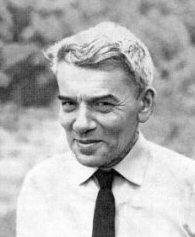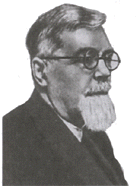Zhilin P.A. “A.I. Lurie — works on mechanics” //
Proceedings of XXVIII Summer School - Conference “Advanced Problems in Mechanics”,
St.-Petersburg, Russia, 2001. P. 1-13.
A.I. Lurie — works on mechanics
A man cannot choose his birthday or birth place. However, time and
habitation country significantly influence upon the making of a
person and determine the character of his activity. Nevertheless,
at all times and in all countries the individuals are born, who
are realized as self-independent and self-sufficient creatures. Such persons
play the role of “evolution catalysts” for the society, into
which they are involved. The problems solved by them are never
accidental but determined by the higher necessities of the society.
The main feature of a realized individual is
a capacity of a person not only to perceive intuitively the society higher
necessities but to take them as a guide to the action. Therefore, this is impossible
to make a correct evaluation of a contribution
of any person into the evolution of a community (either of its certain part)
if one does not realize clearly the state of this community and its
necessities at the evolution stage considered.
 |
|
| A.I.Lurie |
No doubt, Anatoly Isakovich Lurie had realized himself as a self-independent
individual, whose versatile fruits of work we sense so distinctly. The aim of
this presentation is a
discussion of A.I. Lurie's contribution into evolution of mechanics in Russia.
A.I. Lurie had began his self-independent investigations in mechanics in 1925
all at once on graduating from the Faculty of Physics and Mechanics of
Leningrad Polytechnical Institute. Think of Russia being in 1925! The previous
decade resulted in an extremely hard state for Russia. The First World War,
the October Socialist Revolution, and, finally, the fratricidal civil war,
which is the worst and the most dangerous among all kinds of wars.
All this had led to the scarcity and dissociation of the Russian
brain-power to nearly complete destruction of relatively weak industry together with the
total absence of finances for purchase of needed equipment. In addition,
Russia was, actually, in a complete isolation from the all-world
community. Consequently, development of the native industry became one of
immediate tasks. Traditionally, only ship building was rather well-developed,
but other fields of industry (such as mechanical engineering, power
engineering, turbine construction, instrument-making and aircraft industries,
etc.), they all were present in embryo. Everything mentioned above had to be
built up anew. First of all, tens of thousands of skilled engineers were to be
trained. It should be taken into account, that these skilled engineers had to
be prepared from a relatively uneducated medium, since schools worked under
abnormal conditions in 1914-1922 as well. For training a skilled engineer brain-power
competent specialists and, also, text-books were needed. It cannot
be said that there were no scientists in the field of mechanics in
Russia.
 |
|
| E.L.Nicolai |
Suffice it to recall such first-class scientists as
N.E. Zhukovsky, I.G. Bubnov, I.V. Meschersky, A.A. Fridman,
A.N. Krylov, P.F. Papkovich, E.L. Nicolai, and many others.
However, they were extremely few in number for such a vast country
as Russia. As for text-books on mechanics for universities, they
were actually absent. Just then, the generation of Russian
scientists, to which A.I. Lurie belonged, had to start the work.
Creative work of the above-mentioned scientists received a high appraisal by
the launching of the first in the world artifical satellite on October 4th,
1957, along with the fact that to 1960 the technical education in Russia was
recognized as one of the best in the world by the international community.
On graduating from the Polytechnical Institute A.I. Lurie hold the
post of a lecturer at the chair “Theoretical Mechanics” of the
institute. Hereafter, A.I. Lurie began his persistent research
work. It is necessary to emphasize that A.I. Lurie was utterly
interested in various fields of mechanics and of control theory.
It is accounted for by the fact that A.I. Lurie was tightly
concerned with organizations engaged in development and production
of new technique. Among the organizations, Leningradskii
Metallicheskii Zavod (a Leningrad Metal Plant), Osoboe
Tekhnicheskoe Byuro (the Special Technical Department), and Osoboe
Konstruktorskoe Byuro (the Special Constructor Department) to be
pointed out in the first place. As it is known, creation of a new
technique is accompanied by numerous problems associated with
mechanics and the control theory. Over the post-war years,
contacts of A.I. Lurie with industrial organizations were
essentially widened. Multiform demands of practice made the
scientist to perform his investigations simultaneously in various
directions. Therefore, in describing the works of A.I. Lurie on
mechanics we ought to divide the works into separate groups and to
break the chronological succession. As for investigation on the control theory,
into which A.I. Lurie made a valuable contribution, they represent the subject
of a separate consideration.


